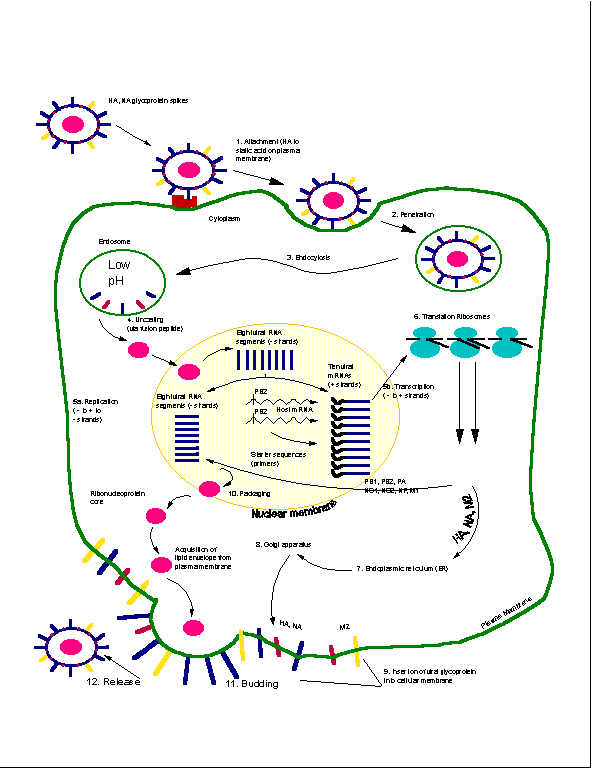
Influenza viruses are among the most studied viruses in the world. An influenza virus particle usually has a spherical or oval shape and is 80-120 nanometers in diameter. At the core of the influenza particle is a segmented genome containing eight segments of RNA (seven segments in the type C virus). Each of these segments codes for a different protein. (see table below)
The Influenza virus replication cycle starts when the HA spikes bind to sialic acid-containing terminals on cell surfaces. Click here to download a virus replication movie clip. The particles of the virus are then internalized into endosomes which have a low pH. The acid pH-activated ion channels created by the virus play an important role in uncoating the virus. After the virus has been uncoated the RNA is sent to the host cell nucleus as ribonnucleoprotein (RNP). RNP is RNA that is still associated with viral proteins. The incoming RNP gives rise to three different virus-specific RNA strand. It produces a messenger RNA (mRNA) strand that contains part of the host mRNA, a full length copy of the viral RNA, and an additional copy of the viral DNA. All transcription and replication of the viral RNA occurs in the nucleus.
After replication is complete, the viral proteins made in the process become part of new virus particles. It is believed that the amount of free nucleoproteins control what type of RNA is produced and therefor control when replication stops and assembly begins. After the virus parts are assembled they slowly bud of the host cell and go infect other cells. After the cell stops releasing viral particles it is not lysed (killed by the virus) but eventually dies due to the disturbance of normal cellular processes.

 email: David Zage
email: David Zage